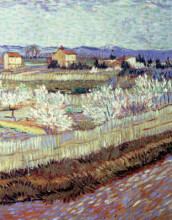Summary: Water 1
- This + 400k other summaries
- A unique study and practice tool
- Never study anything twice again
- Get the grades you hope for
- 100% sure, 100% understanding
Read the summary and the most important questions on Water 1
-
1 Catchments
This is a preview. There are 1 more flashcards available for chapter 1
Show more cards here -
1.1 Catchment characteristics
This is a preview. There are 13 more flashcards available for chapter 1.1
Show more cards here -
What is a catchment and why is this unit used?
The area from which excess water flows towards that river. -
Which landscape properties affect hydrology?
1) size
2) typography
3) landcover
4) geology -
What are different ways of catchment delineation?
Catchment delineation = determining the catchment boundary/water divide
.
-Surface water divide -> in mountainous areas: topographical water divide.
-Groundwater divide. This is a better option in catchments with a high contribution of groundwater flow. -
How can the catchment boudary be delineated?
1) Topographical water divide (follows the highest point in the landscape)
2) Groundwater devide (infiltrating water may hit an impermeable layer in the ground and be led in another direction -
How can the catchment area of a river be subdivided?
-zone 1/upper course/upstream area/production zone
-zone 2/middle course/transport zone
-zone 3/lower course/downstream area/deposition zone -
What is the 1st zone of a catchment?
Zone 1 : Upper course / upstream area / production zone
- dense dendritic network of channels
- surface water and sediments are formed -
What happens when the draining area of a certain point in a river is large? What is the consequence of a high local slope at that point?
A large amount of water has to pass by this point increasing thewetness and flood risk. The highslope results in water flowing away quickly whichreduces thewetness . The ratio between draining area ad local slope is called topographic wetness index. -
What is the 2nd zone of a catchment?
Zone 2 : Middle course / transport zone
- main channel which meanders throug the landscape
- surface water and sediments are transported -
Which hillslope shape results in a high and which in a low topographic wetness index?
High: Concave (hol); converging
Low: convex (bol); diverging -
What is the 3d zone of a catchment?
Zone 3 : Lower course / downstream area / deposition zone
- multiple braches as a result of the flat landscape
- low flow velocity causes sediment to settle
- Higher grades + faster learning
- Never study anything twice
- 100% sure, 100% understanding
Topics related to Summary: Water 1
-
Catchments - Catchment characteristics
-
Catchments - Channels
-
Catchments - Climate
-
Catchments - Rainfall-runoff processes
-
Catchments - Storage
-
Catchments - Discharge
-
Catchments - Hydrograph
-
Catchments - Water balance
-
Groundwater - Groundwater usage
-
Groundwater - Layers and soil properties
-
Groundwater - Groundwater level
-
Groundwater - Isohypes and equipotential lines
-
Groundwater - Flow patterns
-
Groundwater - Flow magnitude
-
Groundwater - Water balance approach
-
Groundwater - Residence time
-
Aquatic ecosystems - The aquatic ecosystem
-
Aquatic ecosystems - Chemical compounds
-
Aquatic ecosystems - Light climate
-
Aquatic ecosystems - Phytoplankton
-
Aquatic ecosystems - Vegetation
-
Aquatic ecosystems - Trophic interaction
-
Aquatic ecosystems - Feedbacks and biomanipulation
-
Aquatic ecosystems - Streams and rivers





























